Articles of 2006
Lauren Bacall's Bad Call
The first thing that I remember noticing about Lauren Bacall was that she was as tall as she sounded. That sultry, breathy voice was a perfect fit for all 5'8'' of her. It's 1964, a cold February evening and a friend of mine, Vinnie Vitale, and I are waiting to get into a Loews movie theater on the upper west side in New York. We're standing right behind Lauren Bacall and Jason Robards, who were married at the time and made a suitably compelling couple, Robards topping out at nearly six feet alongside the statuesque Bacall. We're all in a line for what passed for PPV forty years ago, a heavyweight championship fight broadcast on what passed for cable TV in those days. It was called closed circuit television and was, essentially, 'live” TV on movie screens.
Vinnie and I had grown up together in Brooklyn and he was, at the time, trying to work his way out of a Wall Street back office, while I was trying to work myself off the “obit beat” on an outer borough daily newspaper. And there we were standing behind everyone's movie fantasy of a femme fatale and the actor who was the embodiment of Eugene O'Neill's “Iceman.” I recall making what I considered a clever comment about how we had all “cometh” to the West side to see the fight. That prompted Robards to glance backwards, witheringly and disapprovingly, just as Vinnie, no O'Neill scholar, shot me a “what the **** are you talkin' about” look. Vinnie did, however, catch Robards' glance and took the opportunity to ask, “Who you like, tonight?” Before Robards could answer, if, indeed, he was going to respond, Bacall, without even a glance in our direction, breathed, “Liston, inside four.” Robards nodded his head in agreement and two simultaneous thoughts occurred to me: I'll bet anyone who's married to this woman does a lot of nodding “yes” and it's worth the six dollars, that we're paying to get in to the theater, to hear Lauren Bacall deliver any line of any kind.
It was the first Sonny Liston/Cassius Clay heavyweight title fight on February 25, 1964. Clay would transform into Muhammad Ali, shortly after the bout, but Liston would remain in type, playing the oversized bully for his remaining six troubled years. Liston's “thug rep” had it's incarnation in St. Louis, where he achieved a certain renown as a “collector” for the local money lenders who put out dollars on the streets of East St. Louis (see the Stallone character in the original, and best, “Rocky”). I remember doing a story on jazz spots in that beaten down town of mean streets and during an interview in one of the clubs, the guy I was talking to turned the discussion to Liston's days on those streets: “You paid Sonny on time and in full or you woke up in the middle of next week, with the juice still running.” What I specifically recall about the guy who gave me that line was the way he kept turning on the barstool as if he expected Sonny Liston to come barreling through the door at any moment with bad intentions in his wild eyes. At that point in time, Sonny Liston had been dead for five years.
Liston was steered into boxing, during one of his respites in jail, by a Catholic priest whose name is lost to the winds of “Good deeds, punished.” When Liston started as a professional boxer, the mob connections remained, like any upbringing does, but at least as a fighter Liston was now putting people “into the middle of next week” in the mostly approved manner of the dark art Jimmy Cannon once called, “the red-light district of sports.” Liston had culminated a Goliath-like rush through the heavyweight division to the title with a thorough and absolute dismantling of the champion, the recently deceased Floyd Patterson, in two consecutive first round KOs Those two bouts, within ten months, lasted, cumulatively, less than five minutes. Based on what had gone before this February night, it appeared that Cassius Clay was simply the next offering in line for Liston and that Lauren Bacall's prediction of “inside four” was just about right.
Cassius Clay did have an Olympic gold medal and nineteen straight professional wins, but none of those wins, it was reasoned, had come against anyone who approached the menace, size and sheer ferocity in the ring that Sonny Liston did. Clay was quick on his feet but it was thought that Liston would “walk him down” and in a nod to the heavyweight division's storied past, it was pointed out, by the “experts,” that running and hiding were mutually exclusive tactics. That was the thinking of the “smart money” guys as fight night approached. Most pundits considered the Liston fight a case of “too much too soon” for Clay and made him a 7-1 underdog. Indeed, at the weigh-in the day before the fight, Clay appeared almost on the verge of nervous collapse. His blood pressure rose to a level that indicated to some doctors in attendance that the fighter might be close to having a heart attack. The possibility of postponing or even canceling the fight was given some thought and consideration. I recall the New York tabloids had a headline field day the next day proclaiming, in bold-faced variations that, at the weigh-in, “Cassius had a lean and frightened look.”
The line in front of the theater moved and we were soon inside, and, in the process, I lost sight of Bacall and Robards, who were probably led to some sort of VIP seating somewhere in the theater, unknown and unavailable to obit writers and back office guys from Brooklyn. I remember also thinking that the picture on the screen, for six bucks, a fortune to go through a movie turnstile in those days, was not as focused as it should have been. Neither, in top form, sadly, was Joe Louis, who was doing “color” on the telecast and who seemed to be “in there for a check,” much as he had been in the final fights of his career.
The bout was being telecast from Convention Hall in Miami Beach, a location that was in its last throes as a major fight town, the sport about to begin it's migration to Las Vegas parking lots. It was the only bout to be shown, no preliminary fights and, certainly, in 1964, no female boxers or even ring card girls. It was a “no frills” boxing telecast that made even more absurd, at least to me, the six dollar tab. I forget who was doing the blow by blow, it might have been Les Keiter and he and Louis talked briefly and awkwardly about the upcoming bout. Doing color commentary was not going to be the answer to the question “what will Joe Louis do after boxing?” Mercifully, the fighters soon made their appearance, without any machine-made fog or music or the embellishments that would later become staples in those Las Vegas parking lots.
There were introductions of the celebrities at ringside including the Brown Bomber, who took momentary leave from his broadcasting duties to lumber into the ring along with Frank Sinatra, known as a knowledgeable fight guy. Finally, the fighters were introduced and the referee, Barney Felix, motioned them to the center of the ring for their instructions. As the fighters came together, still in their robes, Vinnie poked me in the ribs and in a full throated voice, more at home in Ebbets Field than in a New York movie theater, proclaimed what all in the audience could now plainly see, “Lookit that,” Vinnie exclaimed, “Clay is as big as Liston.” And Vinnie was right, standing within inches of each other, Cassius Clay and Sonny Liston were eye to eye. Liston, the massive Goliath, the leg breaker from St. Louis, the monster who had sent Floyd Patterson sneaking out of town in a disguise after their second fight, was being stared down by a fighter, who the day before had been deemed “scared to death.” It was, of course, the first of several surprises to be telecast into that west side movie theater over the next half hour. I wondered whether Lauren Bacall was reconsidering her “Liston inside four” call.
The fighters, finished with the instructions, turned back to their corners, removed their robes and turned towards the center of the ring, awaiting the bell. And though no one knew it at that moment, one fighter was about to step into storied and controversial legend, the other about to begin a slow, sad public downfall that commenced six rounds later when he sat on his stool and relinquished the most coveted title in boxing. Cassius Clay became Muhammad Ali and his subsequent transgressions in and out of the ring, real and perceived, were mostly overcome by the enormity of his skill as a heavyweight champion. Sonny Liston's reign as the terror of the heavyweight division diminished quickly and was largely forgotten by the time he died, alone in a Las Vegas bedroom, under circumstances that still provoke discussion and dispute. I remember, to this day, the fighters, as they were that night; I remember Vinnie Vitale and his Flatbush tinged exclamation about Clay's size; I remember the six bucks I had to come up with to get into the theater; I even remember Joe Louis and what a great fighter he had been and what a bad broadcaster he was. But what I remember best was that 5'8″ beauty we stood behind in line to get in. I remember Lauren Bacall and I remember her line about the fight. It was a bad call, but she threw the line out there like a perfect left jab. With a voice like that, you just had to be 5'8″.
-
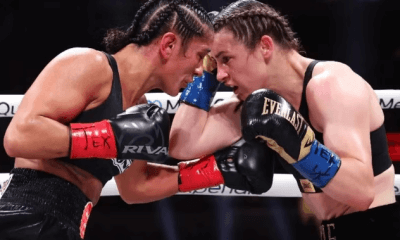
 Featured Articles3 weeks ago
Featured Articles3 weeks agoResults and Recaps from New York Where Taylor Edged Serrano Once Again
-

 Featured Articles1 week ago
Featured Articles1 week agoThe Hauser Report: Zayas-Garcia, Pacquiao, Usyk, and the NYSAC
-

 Featured Articles2 days ago
Featured Articles2 days agoOscar Duarte and Regis Prograis Prevail on an Action-Packed Fight Card in Chicago
-

 Featured Articles3 weeks ago
Featured Articles3 weeks agoResults and Recaps from NYC where Hamzah Sheeraz was Spectacular
-
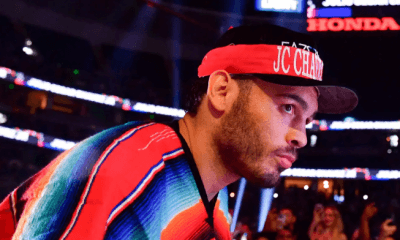
 Featured Articles4 weeks ago
Featured Articles4 weeks agoFrom a Sympathetic Figure to a Pariah: The Travails of Julio Cesar Chavez Jr
-
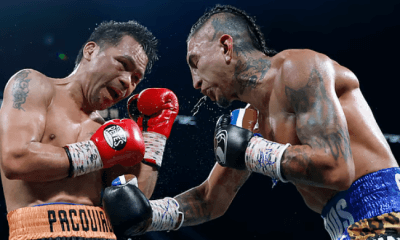
 Featured Articles2 weeks ago
Featured Articles2 weeks agoManny Pacquiao and Mario Barrios Fight to a Draw; Fundora stops Tim Tszyu
-
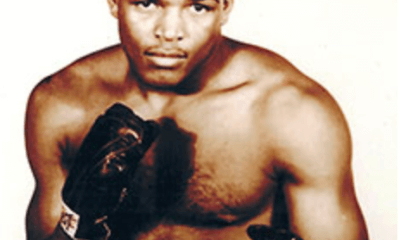
 Featured Articles4 weeks ago
Featured Articles4 weeks agoPhiladelphia Welterweight Gil Turner, a Phenom, Now Rests in an Unmarked Grave
-
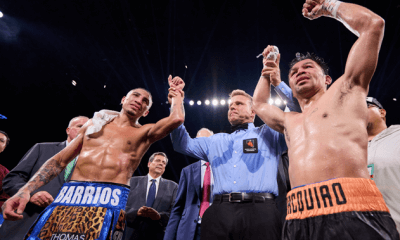
 Featured Articles2 weeks ago
Featured Articles2 weeks agoArne’s Almanac: Pacquiao-Barrios Redux
















